Jaskolka Bieberstein
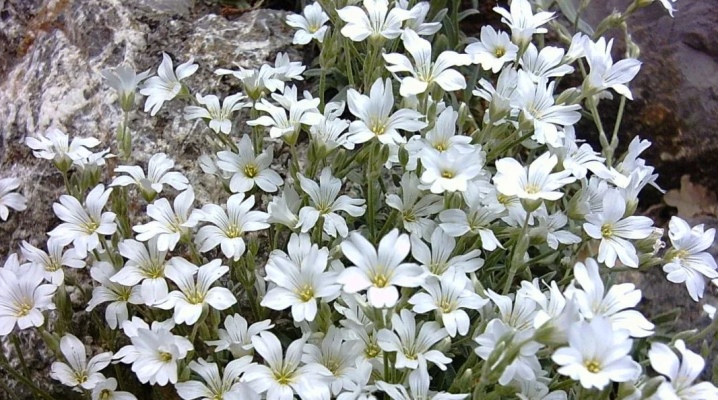
The Bieberstein jasper is a very unusual plant. The culture belongs to the flowering genus, while it is little known. Chickweed can be found far from always and not everywhere, since it makes special demands on the conditions of its cultivation. In today's article, we will learn all the most interesting about this plant.
general description
Jaskolka Bieberstein is a spectacular perennial, which comes from the Clove family and the genus Jaskolka. The culture has another popular name - Bieberstein's hornfel.
The grass is undersized. The height of its stems rarely reaches over 25 cm. Yaskolka produces neat leaf blades of a lanceolate structure. They are characterized by sharp tips, as well as solid edges without notches. The foliage length index can be from 2.2 to 3.5 cm. The average leaf width is represented by values from 1 to 9 mm.
The foliage has characteristic small white villi. They give the impression of a felt surface. The petiole is not here. Due to the presence of villi, the plant in question forms loose rough edges, which are very similar to a silvery carpet. The dying off of culture leaves usually takes place in tier order.
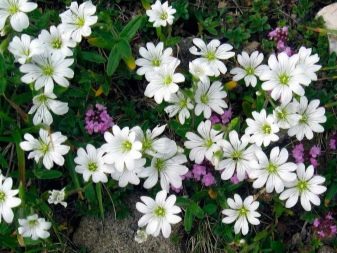
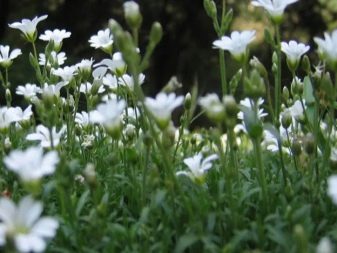
The flowering of an unusual and beautiful plant occurs in the last decade of April. This stage continues until the last days of May. As a rule, flowering duration is at least 40-42 days. There are years in which the Bieberstein chickey blooms in mid-April or early May. Much depends on how cold the spring season was. At the same time, a solid snow-white cover can usually be seen only for 3 weeks, no more.
An interesting type of "snowdrift" is formed by several factors. This is influenced by the step-by-step process of opening the buds, as well as the long lifespan of one flower - up to 6 days. The lifespan of one individual specimen depends on its location on the stem-base. The buds that are in the upper part and open at the end of May remain attractive and decorative for only 2-3 days.
Separate flowers of the chive can gather in loose semi-umbels on the upper halves of the stems. Usually, the diameter of the corollas of a snow-white color is from 1.5 to 3 cm.
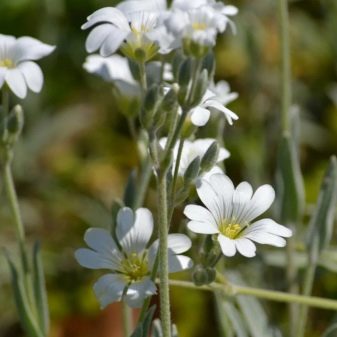
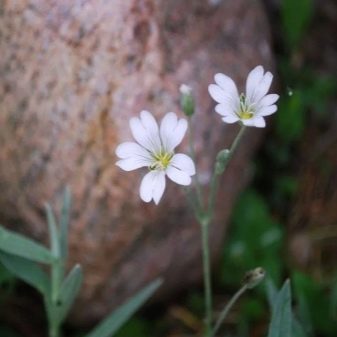
Perennial original plant is characterized by abundant fruiting. Yaskolka is distinguished by a short period from the moment of flowering to the ripening of seeds. This stage takes only 17-25 days. The first seeds, as a rule, ripen by the end of May. However, fruiting of an active nature usually occurs in early June.
The stalks of the chrysalis are creeping as well as stolon-like. They take root beautifully and quickly at the earliest opportunity. The root system of the culture under consideration is quite powerful, but at the same time it differs in a horizontal structure. The rhizomes of the chippings are not located too deep underground.
A feature of the roots of the plant is that they are able to easily penetrate even the smallest and narrowest cracks in the stones. If the opportunity arises, they can provoke the stone to split.
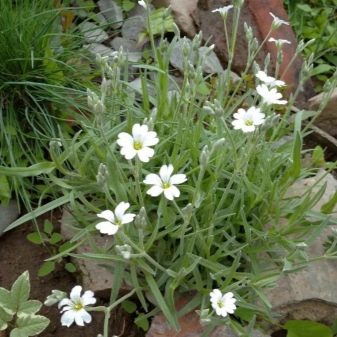
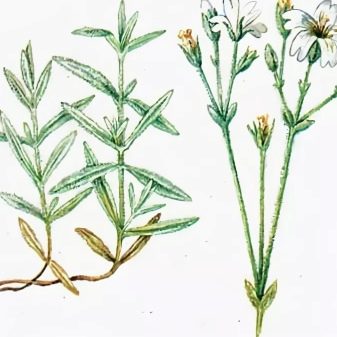
Spreading
In the conditions of its natural environment, Bieberstein's fish is found on the territory of the southern Crimean regions. Thanks to this, another name was given to the culture - the Crimean edelweiss. Yaskolka feels very good and comfortable in stony and dry soils, where other plants usually simply cannot take root.
The plant can also easily adapt to a wide variety of climatic conditions., therefore, today the yaskolka can often be found in various adjoining plots throughout Russia.
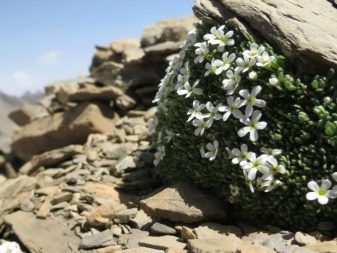

Views
There are different types of Bieberstein jaspers. Let's take a closer look at the most popular and attractive specimens.
Felted
This chisel has a very beautiful appearance. It is a perennial plant showing small snow-white flowers. Their shape resembles miniature stars. Felt chippings are the most compact. Upon completion of spring pruning, it can form a very strong pillow-type crown.
The villi of the original chippings carpet usually grow up to 30 cm. Inflorescences are made up of 15 flowers. The stems are directed upwards, and the processes and leaves grow significantly pubescent. The flowering period is in May and June.
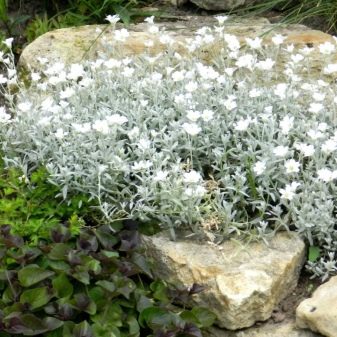
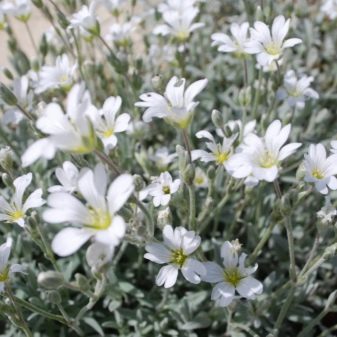
Alpine
A beautiful perennial plant that grows up to 15 cm. The culture is characterized by highly branching stems, produces oval foliage. Its color is silver-greenish. Alpine leaf blades are small in size. The plant is characterized by miniature white flowers. In diameter, they reach a mark of 1 to 2 cm. One inflorescence can contain from 4 to 5 flowers.
The considered species blooms in May. This stage of development continues for 30 days. At the same time, alpine chickweed bears fruit very generously. The plant does not require complex care. It only needs to be properly pruned from time to time, removing all old and deteriorated processes. Those shoots that have already bloomed must also be cut off.
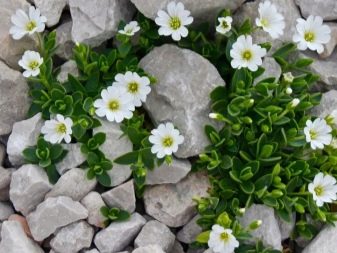

Purple
Under natural conditions, this plant can be found in the Caucasus or Turkey. The purple chrysalis produces shoots, the height of which can be up to 25 cm.The leaves are located opposite on the stem, are small in size. The leaf blades of the crop remain green even during the winter season.
The species really does not like excessive moisture, so it is watered only as needed.
The plant does not need special care, but in winter it can be taken care of in a certain way. We are talking about spruce branches, which should cover the planting, since under the influence of very low temperature indicators, the purple chickweed can freeze out.
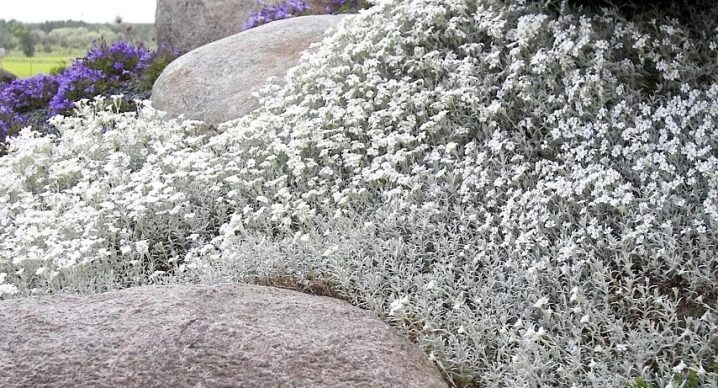
Landing
Let us consider in detail how to properly plant the Bieberstein jelly.
Preparation
First, certain preparatory operations will be required to ensure the successful planting of the plant. First you need to find a good place for him. In open ground, the culture is planted with seeds before winter or in April before the snow melts.
It is necessary to properly prepare the soil and seedlings.
- Jaskolka has not been selected for selection, so it needs to select the same conditions as for its wild-growing "brethren". It should be borne in mind that in nature, culture is found on plateaus open to wind and sun, as well as in the Crimean mountains. Such nuances should be taken into account when planning to plant a splinter.
- For a flower bed, it is necessary to select a sufficiently illuminated "square" on the site.
- You can place the plant in partial shade, but in this case, a chic "silver carpet" will not be formed.
- It is advisable to choose a stony soil mixture. The ideal option is loam, combined with crushed limestone. Scanty soils are optimal, so there is no need to worry about soil saturation.


Technology
We will understand the features of the technology for planting the jascoli:
- prepare the soil before planting - this must be done 3 weeks before the procedures;
- before planting, they dig up the earth, add 6 kg of humus;
- it is necessary to dig small holes, leaving gaps of 30 cm;
- it is allowed to plant either seeds or seedlings;
- when the seedlings are planted, the plants need to be watered.
After planting, the culture will only have to provide proper care.
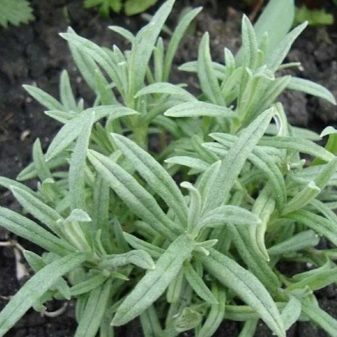

Care
Let's figure out the basics of caring for a jaskolka, located in the open field or at home.
- In the first weeks after planting, plants need watering and loosening of the soil mixture. The earthy ball should not be overly moist. It is important to monitor the drainage of the ground.
- Water the plant, which is planned to grow at home for seedlings, as the earth dries up.
- When the plant is transplanted into open ground, its seedlings need to be fed and pruned. It is advisable to add organic fertilizers such as liquid mullein.
- In a permanent location, the plant should be watered sparingly. A little later, the culture will need watering no more than once every 10 days.
When the chickweed takes root well in the main place and grows a little, you can try to divide it into parts. It is recommended to do this in the spring.


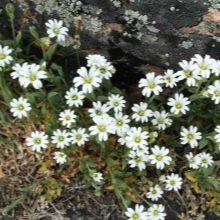
Reproduction
The plant in question can be propagated in several ways:
- cuttings;
- division;
- seeds.
Cutting and dividing are the simplest techniques. But growing a crop from seeds requires more labor and time.
Cuttings are usually prepared in early spring or late in the fall. Root them in open soil near mature plants. The division is carried out in the spring before the stage of active development. A strong bush is separated very carefully and carefully.

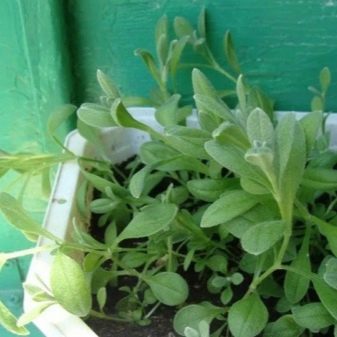
Diseases and pests
For the yaskolka, only those pests that live on the yayla are dangerous. As a horticultural crop, the plant is resistant to diseases and pests. Fungi are capable of harming the chrysalis only when the soil mixture is highly moistened.
The plant is more comfortable to be dry.
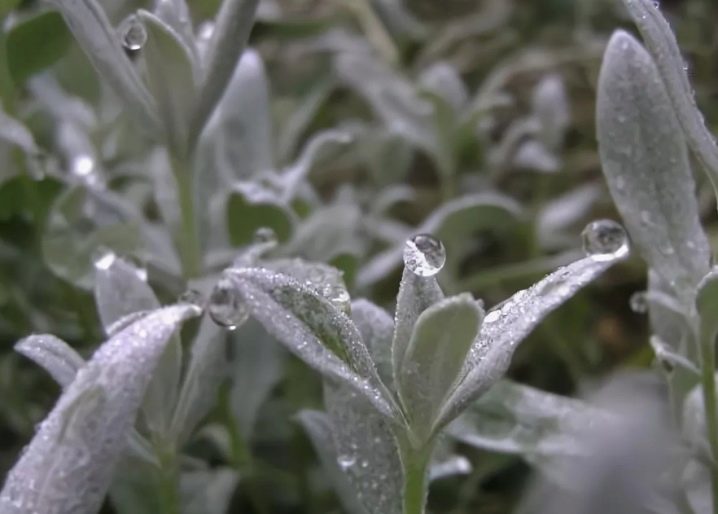
Application in landscape design
In landscape design, chippings can be applied in the following way.
- The plant is decorated with low borders.
- Alpine slides are decorated with jascol (the "Victoria" variety is especially suitable).
- Planting is suitable for decorating rocky bases and rockeries.
- Can decorate mixborders and areas between stones.
- Most often, the plant is planted in flower beds and flower beds.
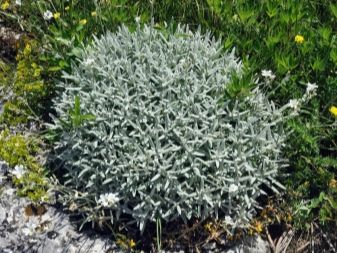
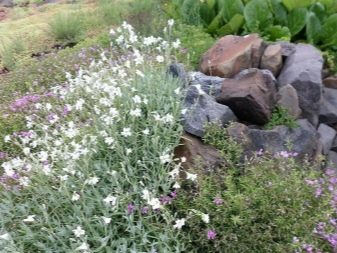







































































































The comment was sent successfully.